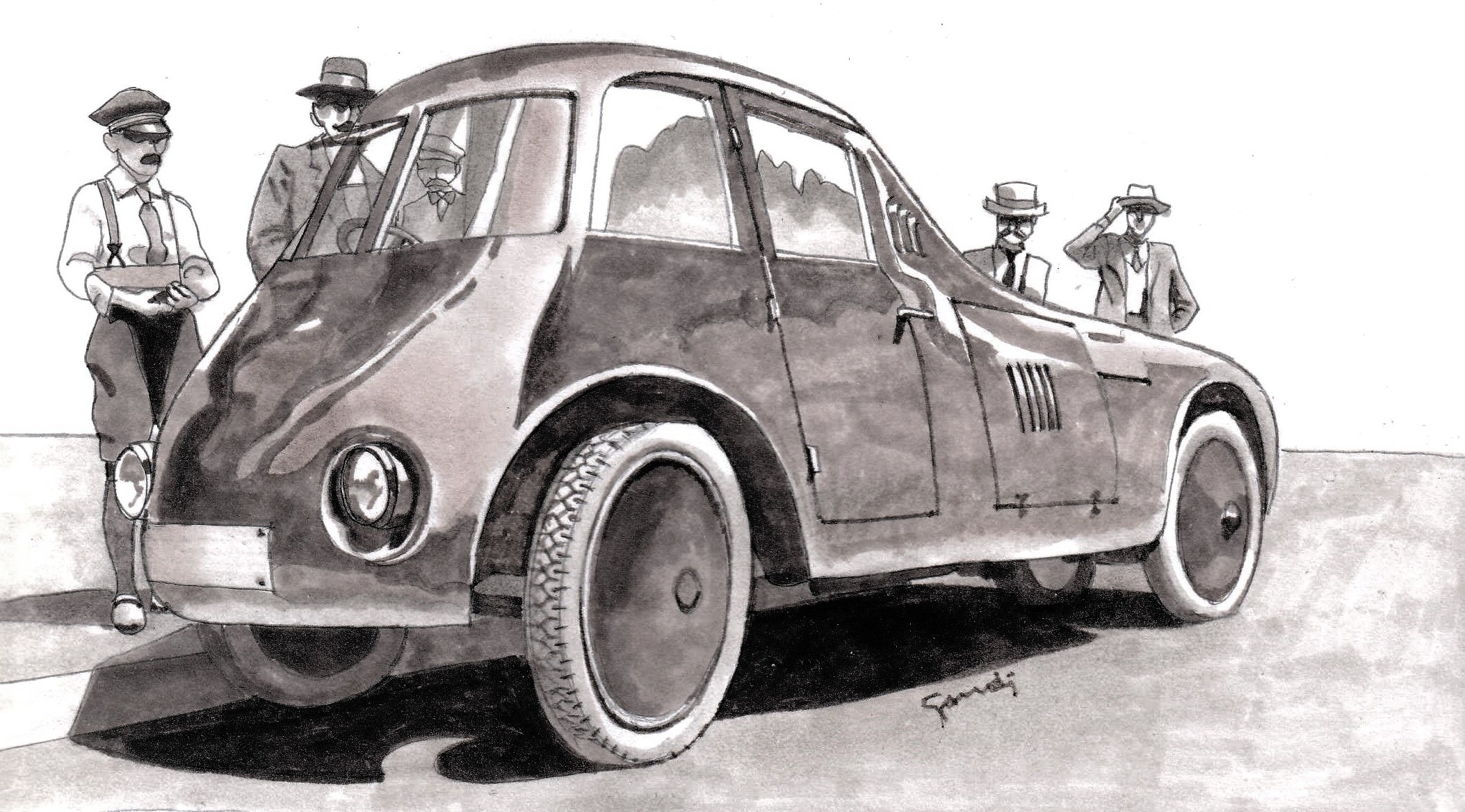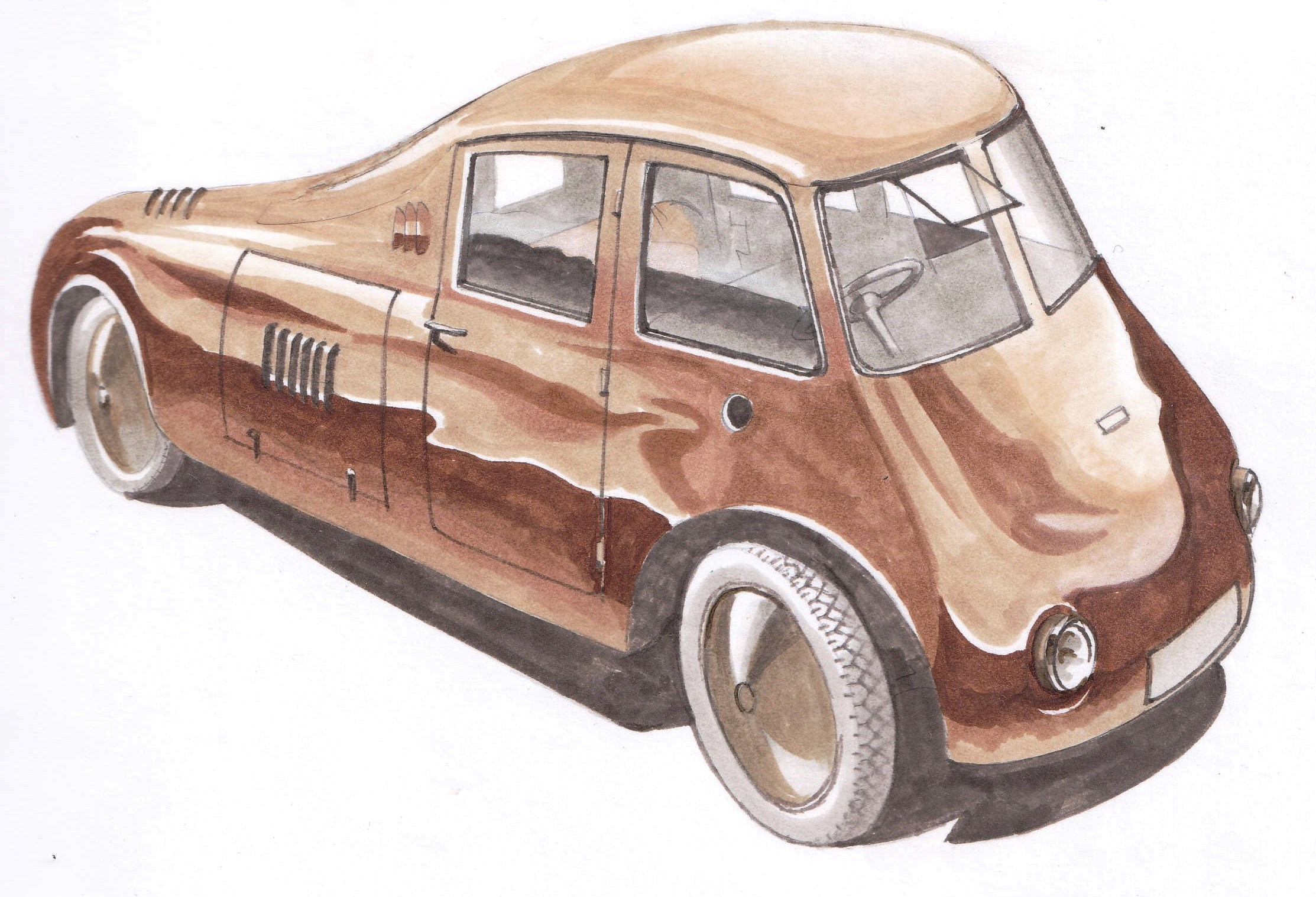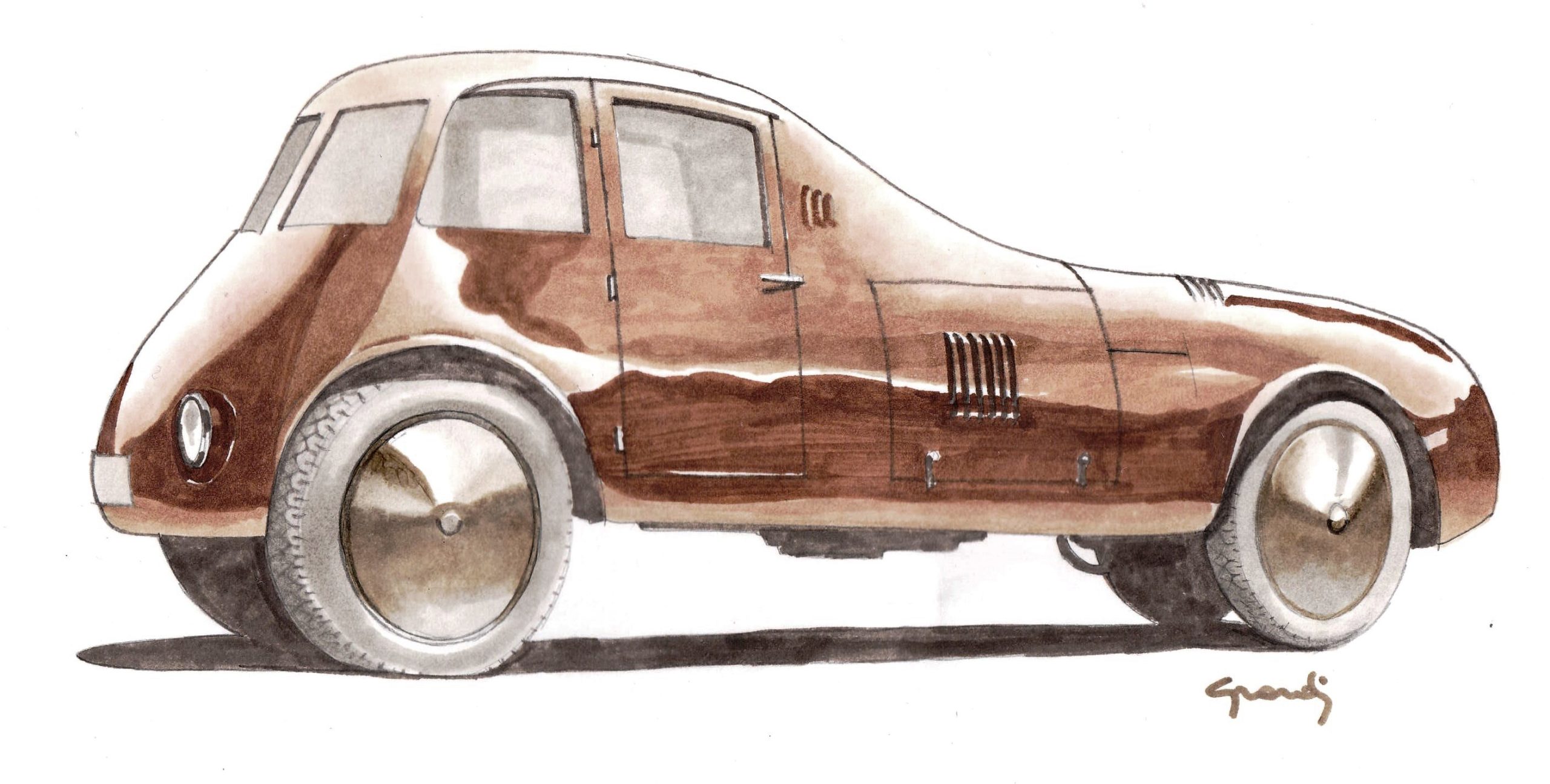1923. Persu, the power of fantasy
With the valuable support of Prof. Massimo Grandi’s depth of knowledge and illustrative talent
Photo credit: Some images are taken from the book Asi Service "Quando le disegnava il vento" by Massimo Grandi
It first introduced the innovation of placing the wheels inside the bodywork, it was arranged in similar fashion to how helicopter cabins are configured today: passengers in the front and the engine to the rear generating maximum aerodynamic efficiency, it placed the rear wheels close together without any differential system allowing it to reproduce the shape of a falling water drop… but the car the Romanian engineer Aurel Persu presented in 1923 could also compete, with a pretty good chance of winning, for the prize of the ugliest car in the world!

If you venture out to Bucharest, where it is exhibited at the National Technical Museum, you might well confirm this thought. Yet this visionary invention that sacrificed everything for function and drastically reduced fuel consumption did not go unnoticed at its time: both Ford and General Motors showed interest in buying the patent. But neither wanted to commit themselves to applying it to production cars, something that was entirely understandable in some respects: the negotiations went through intermediate stages that could have taken it very far. But for Aurel Persu the proposals turned out to be unacceptable and the car remained the property of its inventor who in 1966 donated it, after driving it for some 120,000 kilometres, to the museum it is currently exhibited in.

Does it look like a shoe? It’s far too easy to mock an idea that, in its day, was well ahead of its time. Thank you engineer Persu for your courage.
